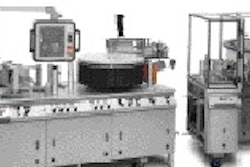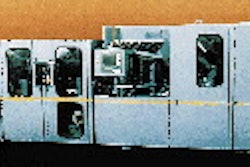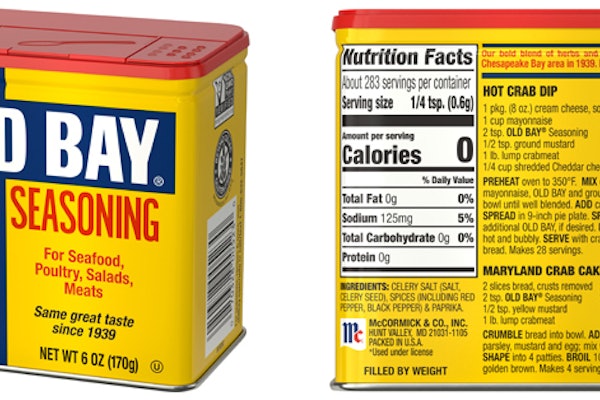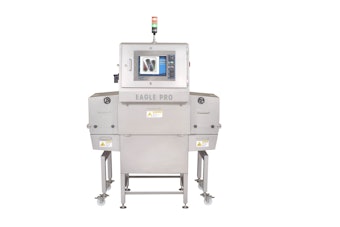Kraft Foods, Glenview, IL, is pioneering a new cost-containment strategy that has the potential to affect virtually all the plastic containers and corrugated boxes that it buys. Ironically, the concept leaves totally intact Kraft's purchasing agreements with its suppliers of plastic bottles and paperboard boxes. Rather, Kraft has begun to hedge prices of resin and linerboard in "forward" contracts with Koch Chemical Intl. (Houston, TX).
Hedging is a technique that has long been used for food ingredients and energy products via contracts bought and sold on one of several commodities exchanges. These amount to buying or selling a contract to deliver a specific commodity like wheat or vegetable oil at a specific price at a specific future date.
Currently, these commodities exchanges do not yet track and report prices for packaging materials like resins and paperboard products. Instead, a growing roster of "intermediaries" or "market makers" like Koch Chemical and other firms offer packagers protection from materials price volatility through the use of purely financial instruments. These instruments are separate from and do not affect existing supplier purchasing agreements.
One such instrument is known as a "fixed-price swap," a contract that establishes a price for a specific material in a specific quantity over a certain period of time. For example, Kraft may contract with Koch for 50ꯠ lb of polyethylene terephthalate per month at 50¢/lb for one year. Also part of the contract is the identification of a PET price-tracking index like CMAI or Chemical Data, both of Houston. Depending on the price that index reports at the prearranged settlement dates (typically quarterly for Kraft), Koch reimburses Kraft if PET prices are tracking above 50¢/lb. If the reported price dips below 50¢/lb, Kraft pays Koch the difference.
The result is that Kraft is protected regardless of how much it pays molders for PET bottles. The bottom line is that it won't have to pay more than 50¢/lb for the contracted volume of PET resin during the duration of the contract. Whether called a hedge or a swap, the process is part of what all participants call risk management.
At Kraft, the group responsible for hedging is its commodities department, not purchasing. However, Mark Teister, Kraft commodity manager for packaging materials, says his department works closely with the company's procurement people who deal with suppliers of bottles, film and boxes. Like many other large food processors, Kraft's commodities department has traded in futures contracts for its ingredients for many years.
Last year, Kraft retained commodities consulting firm Hammer & Co. (Falls Church, VA), to study how the company could use hedging to protect against price volatility in packaging materials.
Last year's research
"I'd worked with Kraft for over a decade," says Tom Hammer, president of the company bearing his name. "Kraft called me in to begin the research to analyze the feasibility of hedging in the packaging area. Later on, they brought in Mark to establish hedging contracts of packaging materials on a full-time basis.
"When this began, I had no experience in tracking packaging prices. I found that these materials were going to be quite different since there were no contracts on exchanges with publicly reported prices."
To Kraft, the nontraditional commodities, like plastics and paper, displayed price swings every bit as wide as traditional commodity ingredients, says Hammer. And packaging costs can have just as big an impact on Kraft's budgets, too, and the cost increases are just as difficult to pass through to consumers. In terms of outlays, some of these packaging materials represented investments every bit as big as those of the food commodities.
What was missing was transaction intermediaries. These companies started to identify themselves by '96, and soon there were more players. "When I started the project in mid-'97, I could find few companies willing to serve as intermediaries," Hammer recalls. "I found Koch Chemical, and one or two others for some of the commodities. By the time I was finishing up at the end of '97, I found that most commodities were covered, and multiple intermediaries were available for a lot of the major resins and paper products. So during my six months, this whole concept of packaging material hedging began to mature."
Plotting the indices
A whole variety of resins for film or rigid plastics are petrochemical-based commodities that are covered by the intermediaries. On the paper side, the commodities are basically linerboard and some secondary paper products.
One part of Hammer's project was to evaluate the various price indices that are published for these materials. That's because the two contract parties settle payments based on the published price indices, and some of these data may not be the same as those a company uses to settle with its suppliers. When a blow molder charges Kraft a price for PET that's higher than the index price, that's "basis risk." In selecting an index, that basis risk needs to be assessed, Hammer says.
To Kraft, these were new instruments and represented a different way of doing business. While Hammer was performing his research, he needed to learn about these commodities and about historical supply and demand.
"I plotted historical prices back twenty years so we could learn about the demand curve. Because if you're at the top of the demand curve, you probably won't want to hedge at what are likely to be the highest prices. What this situation does is force you to become much more sophisticated in your research."
When a company has studied the index historically against the prices it has paid to suppliers, it can anticipate that basis risk and negotiate against that. For example, perhaps the most accurate index is one that's historically a penny per pound lower than what an end-user like Kraft has paid. The contract could be settled on Index A plus a penny/lb, if that figure is more in line with a company's historical projections.
"That's why it's taken a company like Kraft a good six months to generate the research to be ready to make these contracts," Hammer says.
Effect on purchasing
Although Teister's group works independently from Kraft's packaging purchasing department, they inevitably work in concert. "We're very upfront with our packaging converters explaining to them that we're involved in hedging," he says. "Typically, it helps make our contract negotiating simpler."
Sometimes all Kraft purchasing people have to negotiate is the price for converting the raw material into a container and for the vendor's service. So it often becomes a 'cost-plus' kind of arrangement. Teister acknowledges that contract terms with suppliers are not fully standardized yet, but hints that may change in the future.
What has changed with Kraft--and other manufacturers--is a move toward a consolidation of suppliers. Hedging has helped to push that consolidation, Teister says, because it's easier to reconcile hedging and actual costs when there are fewer suppliers.
The price protection that hedging brings helps to foster closer relationships between Kraft and its suppliers. "When we can take commodity pricing out of a contract negotiation, our dealings with suppliers are both easier and less contentious," Teister adds. He declined to reveal the specifics of any swap contracts in place.
Still learning
Hedging is still early in development for Kraft. "We're trying to apply some principles we've learned in agricultural commodities to packaging commodities," Teister says. "Quite frankly, we're trying to create some awareness of these instruments, so that more companies in manufacturing will begin looking to them.
"Because we're one of the largest food companies, other companies tend to follow what we do. So we do want to build liquidity in the marketplaces because that's in our best interest, too."
Both the plastic resin contracts and those for paper and other fiber products are developing at about the same pace, he says. There are a number of different market makers that are active in the paper products, and several like Koch, Enron, Shell and Louis Dreyfus are doing the same in the resin area.
All except Louis Dreyfus are affiliated with petrochemical producers that are using these contracts to balance their risk as production companies. "We're working with all of these companies to help move this concept forward," Teister states.
Actually, one food exchange that handles coffee, sugar and cocoa is now looking at creating a linerboard contract. "This exchange is trying to understand the market," Teister points out, "to see if it's a viable one for futures contracts. There's so much fiber used in this country, you'd think it was a natural for an exchange to have a contract."
Some suppliers say that linerboard isn't truly a commodity today. "To an extent that's valid. But then, you can also say that not all wheat is the same," Teister reports. "Since I began to research the fiber issue, I've found that most of the fiber producers are sharing some of the same resources. One will ship paper to its competitors. So they're all using the same basic material. They don't like to make that well known, but it's true."
Justifying a premium
While the goal of hedging is to buy at a reasonable price, Kraft recognizes that there will be times when a hedge might cause the food company to pay a bit above the market for a packaging commodity.
"Koch sells us a flat price curve for the resin," says Teister. "They provide a price, based on their evaluation of the market, that they're willing to commit to. Our managers evaluate the offering, and if we feel it's a good proposal, we accept. Regardless of whether the market goes up or down, we still pay what we agreed to pay."
Kraft obviously would prefer not to pay over the market price, but sometimes the company is willing to trade a slight premium for the long-term protection against drastic price increases, admits Teister. "We do a lot of statistical analysis to determine what prices we should be paying for these different commodities. But the reality is that, like the stock market, trends can continue on long beyond what the fundamentals say they should. And when that happens, you could be paying more than the market price."
Hedging for suppliers
Hammer believes suppliers have an even greater motivation to hedge.
"To me, the question of whether packagers or suppliers should hedge is the difference between the chicken giving an egg, and a hog giving bacon. Packaging materials are like an egg to Kraft. However, like the hog, suppliers and converters make a true commitment to those same products."
Still, Hammer says, there appears to be more resistance to hedging from suppliers than there is from end-users like Kraft. "I think that's because many large manufacturers like Kraft have been hedging for decades in food ingredients, and they're quite used to it," he says.
What these manufacturers weren't used to was being totally exposed without a hedge on the packaging side. "They were just waiting for the nontraditional commodities to be brought under a risk management umbrella, the same way they had long been doing for coffee or steel or vegetable oils," Hammer says.
Particularly in a capital-intensive industry like chemicals or converting, hedging can give these suppliers a better long-term opportunity for capital formation and for plant expansion. That's why Hammer urges the plastics and converting businesses to look at hedging. To suppliers and converters, resin, containers or paper products is everything, it's their product.
Plus, most suppliers are almost totally exposed to the whims of a commodity. For example, all of a sudden the Asian market for a material can go flat, and lack of demand causes a company's prices to plummet. "To plan expansion and borrowing, wouldn't it have been better to be able to tell your banker that you're locked in at a reasonable price?"asks Hammer.
When Hammer finished up his work with Kraft, virtually all of the packaging materials had several different intermediaries willing to take an opposing position in a hedge. With multiple intermediaries, competition is generated, and it becomes much easier to find a swap at an agreeable price.
Looking ahead
As the intermediaries become more sophisticated, some may be willing to agree to a manufacturer's price on one resin, if that company is willing to hedge other resins with the same company. Hammer has found that the more participants in a market for a given material, the more "true" the market will be.
The more companies that get into these types of financial transactions, the better and easier hedging will become. "Kraft has really been an industry pioneer. That's why I was so excited at helping them create this," says Hammer. "I believe that a few years from now, everyone will be scratching their heads wondering why they didn't put this into their risk management portfolio.
"That doesn't mean every company will hedge every product, or that they'll hedge one hundred percent of the products they do hedge." However, these instruments can really be an advantage, he says, when a company senses that a material price is in a trough, or that the market will be experiencing some unexpected price surges.























